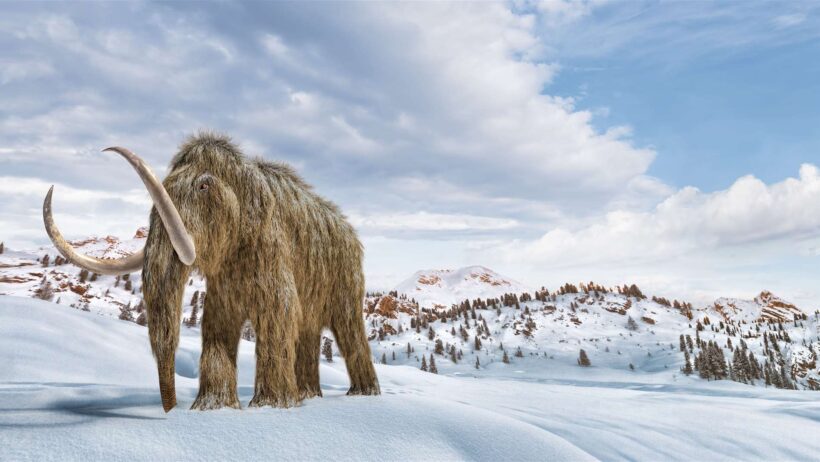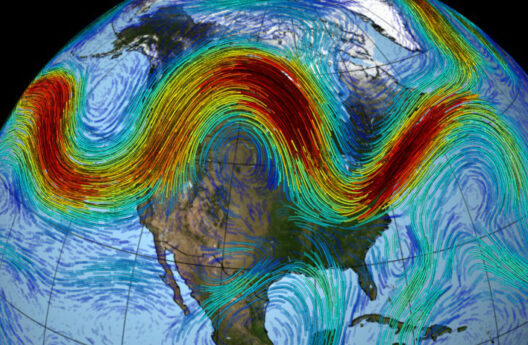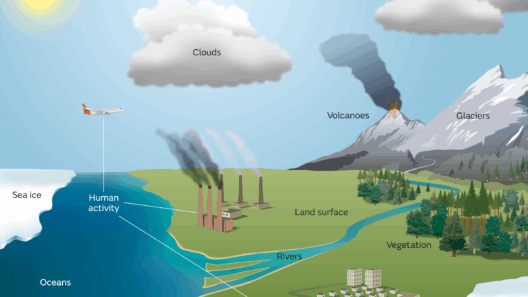Woolly mammoths are often romanticized as the last of a great lineage of megafauna that roamed the Earth during the Pleistocene epoch. Their iconic image invokes nostalgia for a time long past, yet recent scientific discourse posits a captivating hypothesis: Could the revival or reintroduction of woolly mammoths play a tangible role in climate change mitigation? Enter the Frozen Forest Theory—a concept that intertwines paleobiology and modern ecology, offering an imaginative solution to present-day challenges.
At the crux of the Frozen Forest Theory lies the understanding that woolly mammoths were not merely passive inhabitants of their frigid habitats; they were active participants in shaping and maintaining their ecosystems. These creatures, adapted to the icy tundras of the northern latitudes, played an integral role in what is described as a “mammoth steppe,” a vast expanse of dry grasslands and permafrost. This ecosystem, characterized by a unique interplay of flora and fauna, functioned as a carbon sink, a crucial mechanism in sequestering carbon dioxide from the atmosphere.
The mechanisms by which woolly mammoths contributed to carbon sequestration are multifaceted. Their foraging behavior instigated the growth of robust grasses and shrubs, preventing the encroachment of woody plants that would otherwise dominate and negatively affect soil carbon stocks. Moreover, the trampling of the permafrost by these massive herbivores helped to maintain its integrity, thus preserving the carbon trapped within. When mammoths trod across the icy landscape, they created and reinforced a habitat capable of supporting a diverse assemblage of species, which in turn enhanced the ecosystem’s resilience against climatic fluctuations.
Considering the contemporary milieu of climate change, the proposition to resurrect woolly mammoths through advanced genetic engineering—specifically de-extinction technologies—has gained traction. Such initiatives are premised on the potential to reintroduce these animals into their former habitats, thereby restoring the ecological balance that thrives on their presence. Yet, the feasibility of such a venture is steeped in ethical considerations, ecological implications, and scientific challenges. One must ponder: can we recreate a viable population of woolly mammoths that can withstand modern environs?
The implications of a reintroduced population extend beyond mere nostalgia. Hypothetically, a herd of woolly mammoths could stimulate the regeneration of the steppe ecosystem, triggering the reestablishment of vast grasslands that previously existed. This rejuvenation could, in turn, lead to larger areas of exposed permafrost, which act as significant carbon reservoirs. As these vast tracts of land are restored, they could potentially draw down atmospheric carbon levels, a crucial outcome in the fight against climate change.
Furthermore, researchers postulate that the presence of woolly mammoths may help mitigate the warming effects triggered by climate change itself. In their historical habitats, the creation of a “mammoth steppe” could produce a cooling effect, as these open areas reflect more sunlight back into the atmosphere compared to the darker vegetation of modern forests. Thus, the presence of these large herbivores could engender a feedback loop beneficial to climate stabilization.
However, the endeavor to resurrect woolly mammoths and reintroduce them raises a plethora of ecological concerns. The ecosystems that once flourished in their presence have fundamentally altered due to climate change and human encroachment. Can these prehistoric giants adapt to a landscape drastically different from that which their ancestors inhabited? Reintroducing a species that could potentially disrupt current ecological dynamics may breed unforeseen consequences, leading to competition with existing herbivores and destabilization of current vegetation patterns.
This is where the harmony of research, ethical considerations, and pragmatic ecological planning emerges as imperative. The potential to restore mammoth-like creatures may necessitate a nuanced approach—perhaps focusing initially on hybridization with presently existing species that share ecological roles akin to that of the woolly mammoth. This could provide valuable insights into how contemporary ecosystems may respond to such introductions.
As we investigate the concept of de-extinction, we must also be vigilant stewards of our existing ecosystems. The urgency of addressing climate change necessitates immediate action. While the Frozen Forest Theory tantalizes the imagination, it is critical to remember that solutions lie not only in resurrecting past wonders but also in reclaiming and rehabilitating our current environments. Conservation efforts aiming to preserve endangered species and restore fragmented habitats play a synergistic role alongside ambitious projects such as de-extinction.
The potential contributions of woolly mammoths to climate change mitigation serve as a compelling reminder of the intricate connections inherent in ecosystems. As we contemplate the idea of resurrecting extinct species, we must continuously engage in dialogues about ecological restoration and the importance of preserving existing biodiversity. The future of our planet may indeed depend on a multifaceted approach that intertwines ancient wisdom with modern scientific advances.
In conclusion, the narrative of the woolly mammoth extends far beyond the confines of history—it beckons us to reimagine our role as custodians of the Earth and challenges us to innovate our strategies in the face of climate change. The Frozen Forest Theory opens a fascinating dialogue about what was and what may yet be, bridging gaps between the past and the future in our quest for ecological equilibrium.







